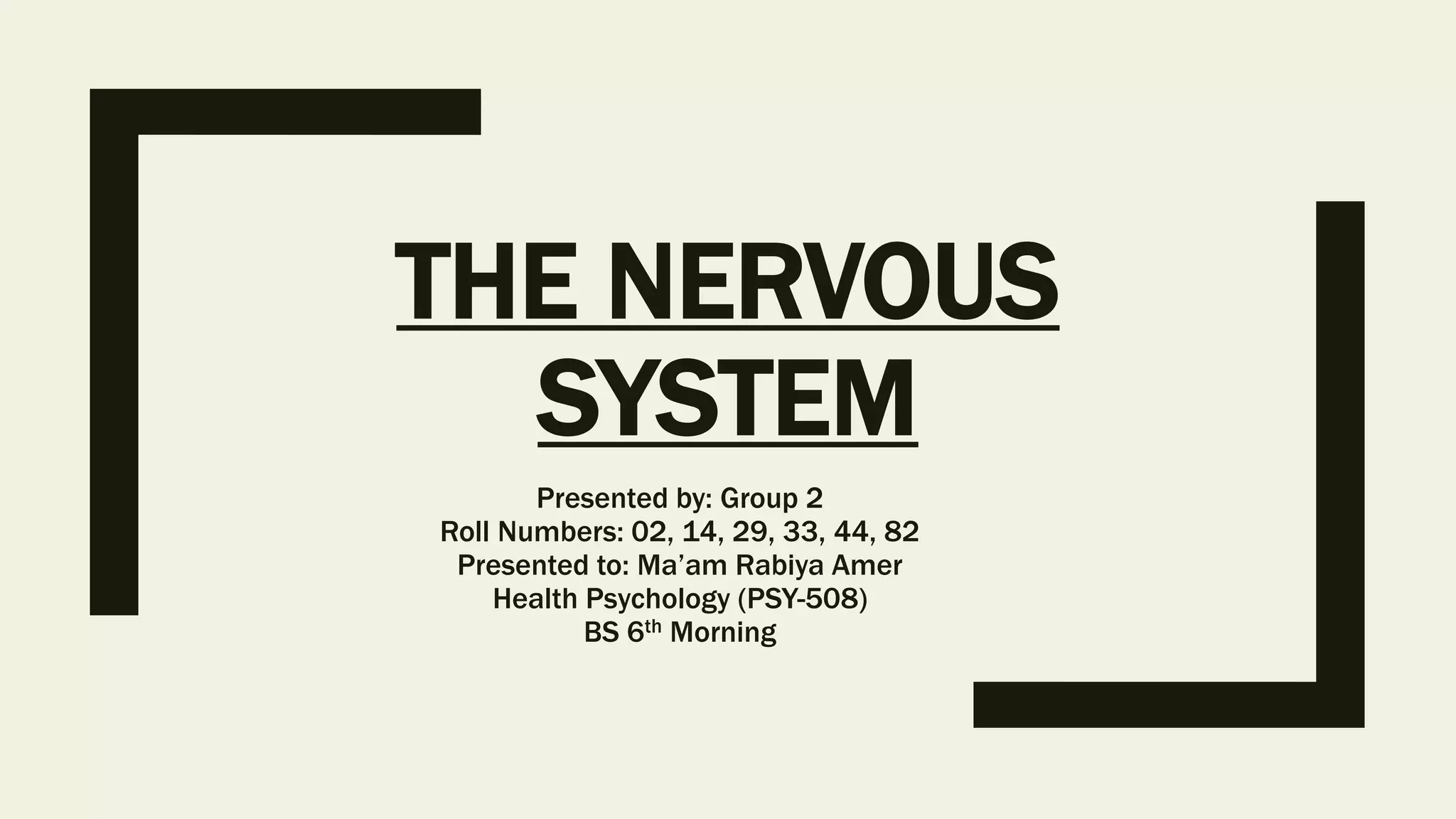The nervous system controls and coordinates all essential functions of the body. It has two main parts - the central nervous system comprising the brain and spinal cord, and the peripheral nervous system comprising nerves outside the brain and spinal cord. The nervous system gathers sensory information and sends motor commands through neurons. It maintains homeostasis through the autonomic nervous system which regulates involuntary functions. Common disorders of the nervous system include epilepsy, cerebral palsy, Parkinson's disease, and multiple sclerosis.





































